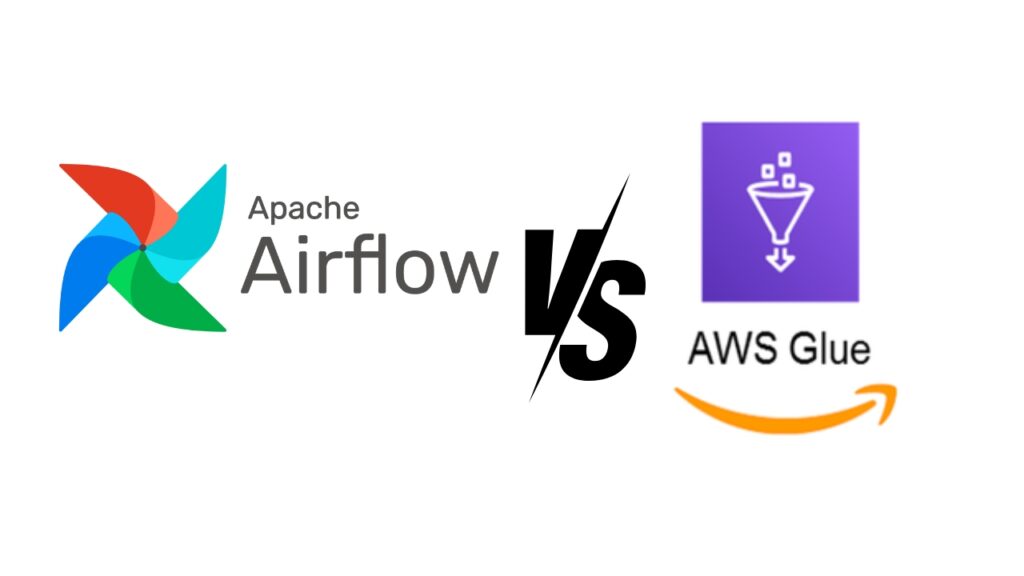AWS Glue vs. AWS MWAA: Which One’s Right for You?
Q1: What are AWS Glue and AWS MWAA?
Great question! AWS Glue and AWS Managed Workflows for Apache Airflow (MWAA) are both powerful tools designed to help you manage and orchestrate data workflows in the cloud. But they serve slightly different purposes.
- AWS Glue is a fully managed ETL (Extract, Transform, Load) service that simplifies the process of preparing data for analytics. It automates the tedious tasks of data preparation, so you can focus on data analysis.
- AWS MWAA, on the other hand, is a managed service for Apache Airflow, a popular open-source tool for authoring, scheduling, and monitoring workflows. MWAA allows you to build and manage complex workflows with ease, leveraging the robust capabilities of Apache Airflow.
Q2: How do these services differ in terms of use cases?
Now, this is where things get interesting. While both services are involved in managing workflows, they excel in different scenarios.
- AWS Glue is ideal if your primary goal is to transform data for analytics or machine learning. It shines in data integration and preparation tasks. For instance, if you’re working with large volumes of raw data and need to clean, enrich, or normalize it before it’s fed into a data warehouse like Amazon Redshift, Glue is your go-to solution.
- AWS MWAA is better suited for orchestrating complex workflows that might involve multiple steps, services, and dependencies. If your project requires a series of tasks that need to be executed in a specific order (like ETL jobs, data quality checks, and report generation), MWAA’s powerful DAG (Directed Acyclic Graph) capabilities can help you manage these workflows efficiently.
Q3: What about the learning curve? Which one is easier to get started with?
Great observation! Ease of use can be a deciding factor.
- AWS Glue is designed to be user-friendly, even for those who may not have extensive coding experience. With its visual interface and pre-built transformations, you can start building ETL jobs without needing to write much code. It’s a great option if you’re looking for something that’s relatively easy to pick up.
- AWS MWAA, while extremely powerful, has a steeper learning curve because it’s based on Apache Airflow. If you’re already familiar with Airflow, you’ll find MWAA to be a seamless experience. However, if you’re new to Airflow, there’s a bit more to learn. The trade-off is that you get a highly flexible and customizable tool.
Q4: How do these services compare in terms of pricing?
Ah, the money talk! Cost is always an important consideration.
- AWS Glue is priced based on the amount of data processed and the duration of your ETL jobs. The pricing is generally straightforward, and it’s pay-as-you-go. This can be cost-effective if you have intermittent or variable data processing needs.
- AWS MWAA has a more complex pricing model, which includes costs for the environment itself, as well as the underlying compute resources (EC2, S3, etc.). The cost can add up if you have a large number of workflows running concurrently or if your workflows require significant computational resources.
However, MWAA provides greater flexibility, and you might find it cost-effective for orchestrating large-scale workflows that involve multiple AWS services.
Q5: What are the scalability considerations for each?
Let’s dive into scalability.
- AWS Glue automatically scales to handle your data processing tasks, so you don’t need to worry about provisioning infrastructure. It’s designed to scale out based on the size of your data and the complexity of your transformations.
- AWS MWAA allows you to scale your Airflow environment by adjusting the number of workers and the size of the instances. This gives you control over the scalability of your workflows, but it also means you need to manage it actively to ensure you have the right resources in place.
Q6: What are the key limitations to consider?
Important point!
- AWS Glue is great for ETL, but it’s less flexible when it comes to managing complex workflows with multiple dependencies. It’s designed to handle data transformations, so if your workflow needs to coordinate various tasks beyond ETL, Glue might not be the best fit.
- AWS MWAA offers incredible flexibility, but it requires more setup and management. Additionally, since it’s based on Apache Airflow, you’ll need to handle the nuances of Airflow’s configuration and management, which can be complex if you’re not familiar with the platform.
Q7: Which one should I choose for my project?
It depends on your specific needs.
- If you’re primarily focused on ETL tasks and need a tool that’s easy to set up and manage, AWS Glue is likely the better choice. It’s efficient, cost-effective, and designed to simplify data preparation.
- If your project requires orchestrating complex workflows with multiple steps, dependencies, and integrations, AWS MWAA offers the flexibility and power you need. However, be prepared for a steeper learning curve and more hands-on management.
Q8: Can I use both AWS Glue and AWS MWAA together?
Absolutely! These services are not mutually exclusive.
- Many organizations use AWS Glue to handle the heavy lifting of ETL processes and then integrate it with AWS MWAA to orchestrate more complex workflows that include tasks beyond data transformation. For example, you might use Glue to clean and prepare data, and then use MWAA to kick off a series of downstream processes like data validation, machine learning model training, and report generation.
Conclusion:
Choosing between AWS Glue and AWS MWAA boils down to your project’s specific needs. Both are powerful tools in the AWS ecosystem, each with its strengths. By understanding your workflow requirements, you can make an informed decision and harness the full potential of these services.


